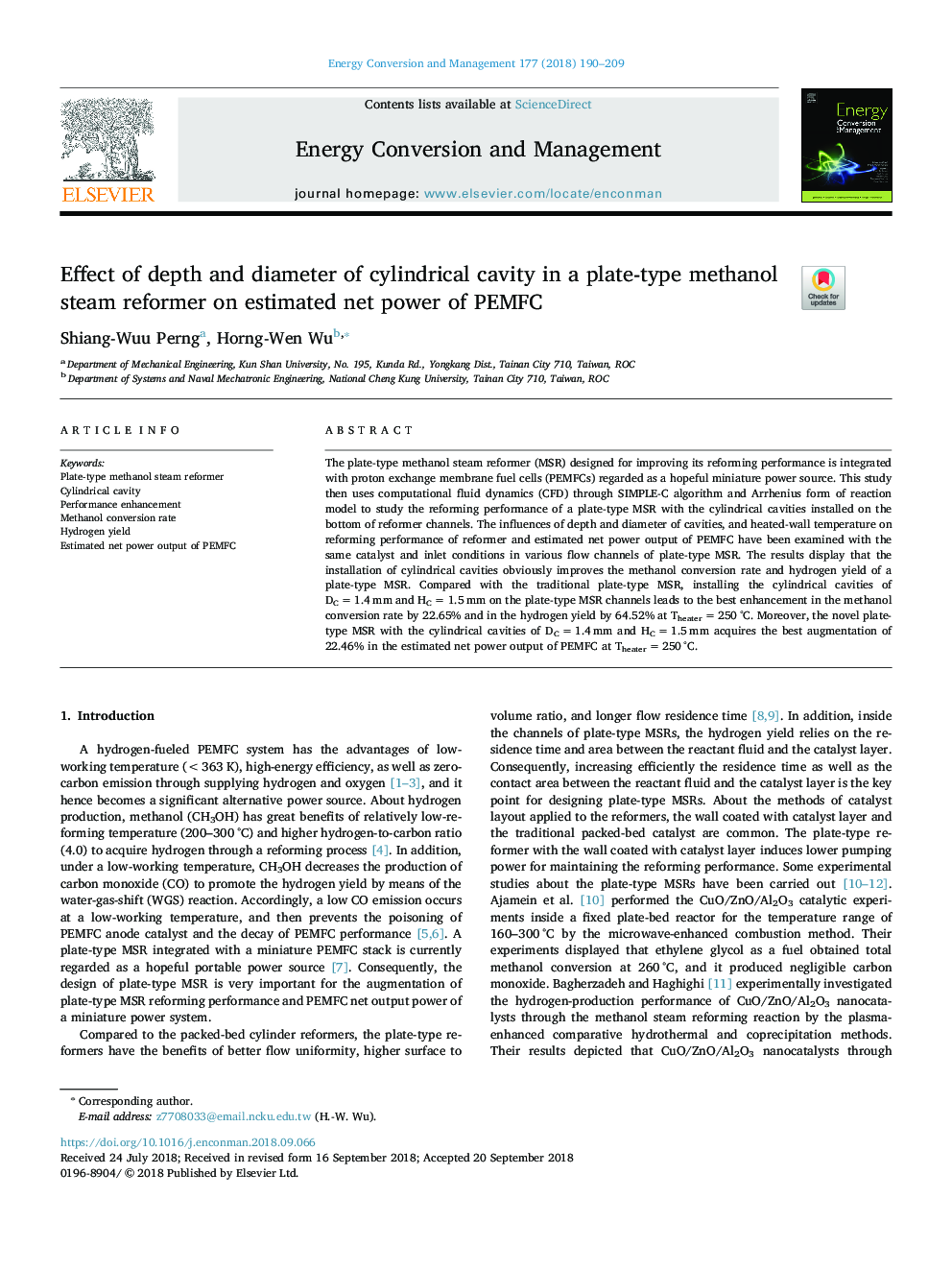| Article ID | Journal | Published Year | Pages | File Type |
|---|---|---|---|---|
| 10226447 | Energy Conversion and Management | 2018 | 20 Pages |
Abstract
The plate-type methanol steam reformer (MSR) designed for improving its reforming performance is integrated with proton exchange membrane fuel cells (PEMFCs) regarded as a hopeful miniature power source. This study then uses computational fluid dynamics (CFD) through SIMPLE-C algorithm and Arrhenius form of reaction model to study the reforming performance of a plate-type MSR with the cylindrical cavities installed on the bottom of reformer channels. The influences of depth and diameter of cavities, and heated-wall temperature on reforming performance of reformer and estimated net power output of PEMFC have been examined with the same catalyst and inlet conditions in various flow channels of plate-type MSR. The results display that the installation of cylindrical cavities obviously improves the methanol conversion rate and hydrogen yield of a plate-type MSR. Compared with the traditional plate-type MSR, installing the cylindrical cavities of DCâ¯=â¯1.4â¯mm and HCâ¯=â¯1.5â¯mm on the plate-type MSR channels leads to the best enhancement in the methanol conversion rate by 22.65% and in the hydrogen yield by 64.52% at Theaterâ¯=â¯250â¯Â°C. Moreover, the novel plate-type MSR with the cylindrical cavities of DCâ¯=â¯1.4â¯mm and HCâ¯=â¯1.5â¯mm acquires the best augmentation of 22.46% in the estimated net power output of PEMFC at Theaterâ¯=â¯250â¯Â°C.
Related Topics
Physical Sciences and Engineering
Energy
Energy (General)
Authors
Shiang-Wuu Perng, Horng-Wen Wu,
